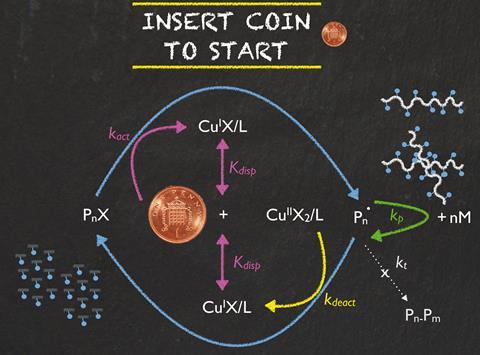This month sees the following articles in Polymer Chemistry that are in the top 10 most accessed from July – September 2016:
Lignocellulosic biomass: a sustainable platform for the production of bio-based chemicals and polymers
Furkan H. Isikgor and C. Remzi Becer
Polym. Chem., 2015,6, 4497-4559
DOI: 10.1039/C5PY00263J
Thiol-ene “click” reactions and recent applications in polymer and materials synthesis
Andrew B. Lowe
Polym. Chem., 2010,1, 17-36
DOI: 10.1039/B9PY00216B
Thiol–ene “click” reactions and recent applications in polymer and materials synthesis: a first update
Andrew B. Lowe
Polym. Chem., 2014,5, 4820-4870
DOI: 10.1039/C4PY00339J
Facile and efficient chemical functionalization of aliphatic polyesters by cross metathesis
Lucie Fournier, Carine Robert, Sylvie Pourchet, Alice Gonzalez, Lewis Williams, Joëlle Prunet and Christophe M. Thomas
Polym. Chem., 2016,7, 3700-3704
DOI: 10.1039/C6PY00664G
Mussel-inspired multifunctional supramolecular hydrogels with self-healing, shape memory and adhesive properties
Zhaowen Li, Wei Lu, To Ngai, Xiaoxia Le, Jing Zheng, Ning Zhao, Youju Huang, Xiufang Wen, Jiawei Zhang and Tao Chen
Polym. Chem., 2016,7, 5343-5346
DOI: 10.1039/C6PY01112H
Investigation into thiol-(meth)acrylate Michael addition reactions using amine and phosphine catalysts
Guang-Zhao Li, Rajan K. Randev, Alexander H. Soeriyadi, Gregory Rees, Cyrille Boyer, Zhen Tong, Thomas P. Davis, C. Remzi Becer and David M. Haddleton
Polym. Chem., 2010,1, 1196-1204
DOI: 10.1039/C0PY00100G
Oxidant-induced dopamine polymerization for multifunctional coatings
Qiang Wei, Fulong Zhang, Jie Li, Beijia Li and Changsheng Zhao
Polym. Chem., 2010,1, 1430-1433
DOI: 10.1039/C0PY00215A
End group removal and modification of RAFT polymers
Helen Willcock and Rachel K. O’Reilly
Polym. Chem., 2010,1, 149-157
DOI: 10.1039/B9PY00340A
The power of light in polymer science: photochemical processes to manipulate polymer formation, structure, and properties
Shunsuke Chatani, Christopher J. Kloxin and Christopher N. Bowman
Polym. Chem., 2014,5, 2187-2201
DOI: 10.1039/C3PY01334K
Toughening of photo-curable polymer networks: a review
Samuel Clark Ligon-Auer, Martin Schwentenwein, Christian Gorsche, Jürgen Stampfl and Robert Liska
Polym. Chem., 2016,7, 257-286
DOI: 10.1039/C3PY01334K
Why not take a look at the articles today and blog your thoughts and comments below.
Fancy submitting an article to Polymer Chemistry?
Then why not submit to us today!
To keep up-to-date with all the latest research, sign up for the e-alerts or RSS feeds, and follow us on Twitter.













